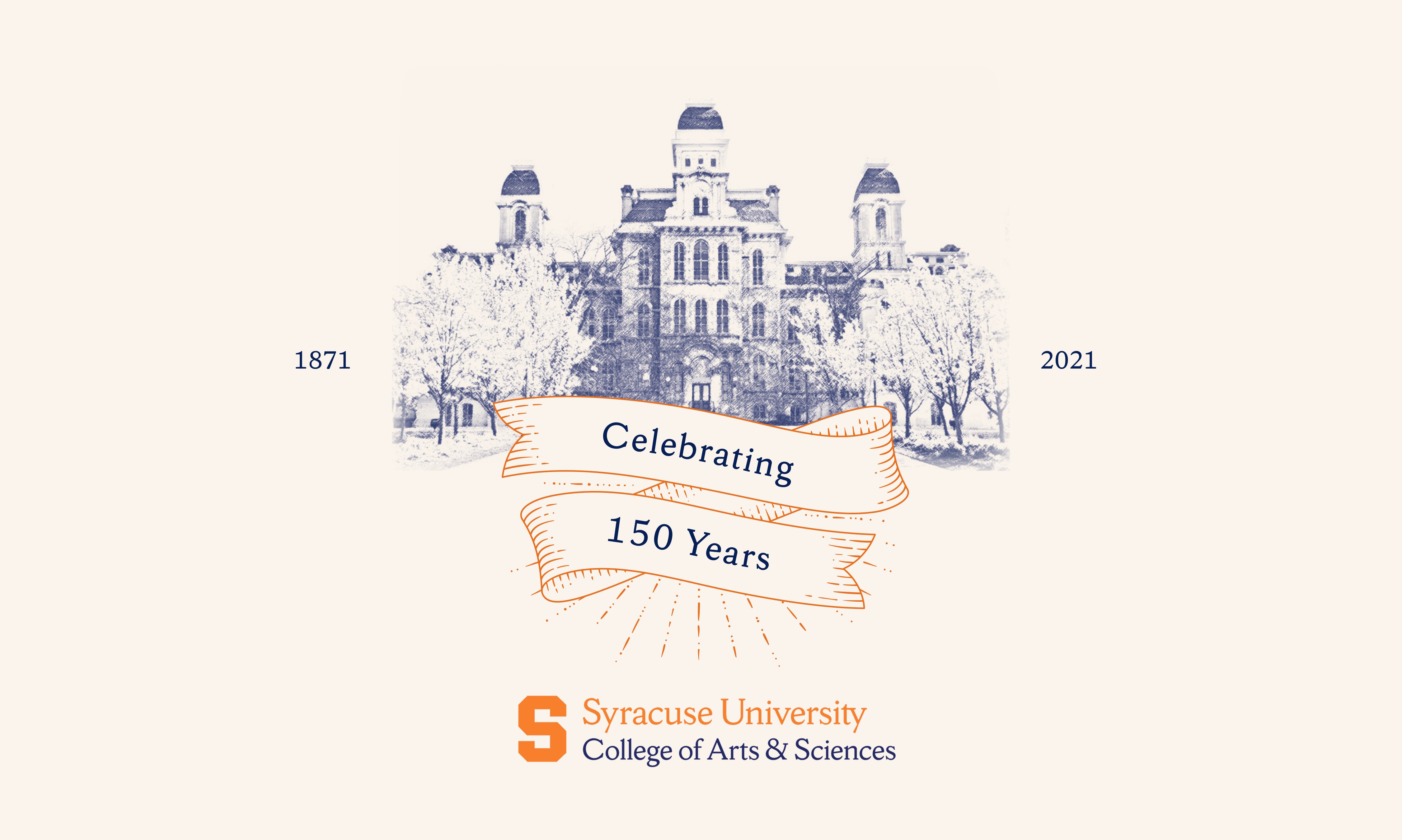Happy Birthday, A&S!
Celebrating 150 years of intellectual fearlessness.

Did you know the College of Arts and Sciences (A&S), Syracuse University’s founding college, is turning 150 this academic year?
Students, faculty, alumni and staff can follow the year-long commemoration on A&S social media channels (ArtSciencesSU for Facebook, Twitter and Instagram; Syracuse University College of Arts and Sciences for LinkedIn.) There will be fun trivia, interesting history and so many reasons for everyone to be proud and inspired by A&S’ story!
A Bit of History
The origins of A&S are the origins of the University. Born in 1871, the College of Liberal Arts (renamed in 1970) was established in a rental property on Montgomery Street in downtown Syracuse. Forty-one students made up its first class.
The original curriculum included algebra, geometry, Latin, Greek, history, physiology, education and rhetoric. Students can still study most of those subjects—and also explore areas related to today’s most pressing issues, such as biotechnology; environment, sustainability and policy; and women’s and gender studies.
A&S continues to play a foundational role in the Syracuse experience. It is the University’s largest college with more than 5,000 students and about 350 faculty members, and all undergraduate students at Syracuse University go through A&S as they complete their liberal arts courses.
Tackling Enduring Questions
Research excellence in A&S has played a key role in establishing the University’s R1 distinction from the Carnegie Classification of Institutions of Higher Education, which notes “very high research activity” – the foundation’s highest ranking.
A&S students and faculty are on the cutting edge of some of the world’s most innovative research. From a potential new diabetes drug without harsh side effects to detecting gravitational waves, our scholarship and discovery span the breadth of human endeavor in the sciences and math.
In addition to high-profile scientific discovery, A&S is equally committed to supporting contemporary humanistic inquiry. The humanities are traditionally subjects such as art and music histories, cultural histories, languages, literature, philosophy, religion, writing and rhetoric. These subjects can become lenses through which new solutions may be found to longstanding problems.
For example, the area of health humanities seeks to reorient medicine’s profession through literature and art to center on the patient, not the symptoms—and thus improve health care delivery.
Art and art analysis are powerful tools for recognizing and rectifying social injustices.
And of course, literature and poetry by A&S students, renowned faculty like George Saunders and Mary Karr, and alumni such as Cheryl Strayed open windows onto the worlds of others beyond ourselves—bringing us together in times of division.
The Syracuse University Humanities Center, founded in 2008, weaves these threads together into a robust tapestry of offerings that spotlights the humanities as vehicles to understand and address current social and cultural questions. It is home to a wide range of programming (including Books in the Humanities, an annual yearlong Symposium and special workshops and seminars), faculty and graduate student fellowships, and distinguished visiting professorships. Its programs are open to all.
Pioneers in Their Fields
A&S students learn to think critically, act ethically and live decisively. When they graduate, they are prepared to stand up and lead wherever they are.
These are just a few examples of alumni outstanding in their fields: Eileen Collins ’78, the first woman to both pilot (1995) and then command (1999) a space shuttle mission; Franklin Story Musgrave '58, the only astronaut to fly missions on all five of the NASA space shuttles; Elliott Portnoy ’86, Global Chief Executive Officer of the global law firm Dentons and Syracuse University’s first Rhodes Scholar; author and marathon runner Kathrine Switzer ’68 (English), G’72, the first woman to officially enter and run the Boston Marathon in 1967; and Dr. Robert Jarvik ’68, H’83, chairman and CEO of Jarvik Heart Inc., developer of the human anatomic configuration and surgical placement of the Jarvik 7, which led to the first human application of a permanent total artificial heart.
More to Come
This was just a taste of what makes A&S worth celebrating. Follow A&S on social media for more history, photos and ways to join the fun this year.
Students, faculty and alumni can also share A&S memories by email.
